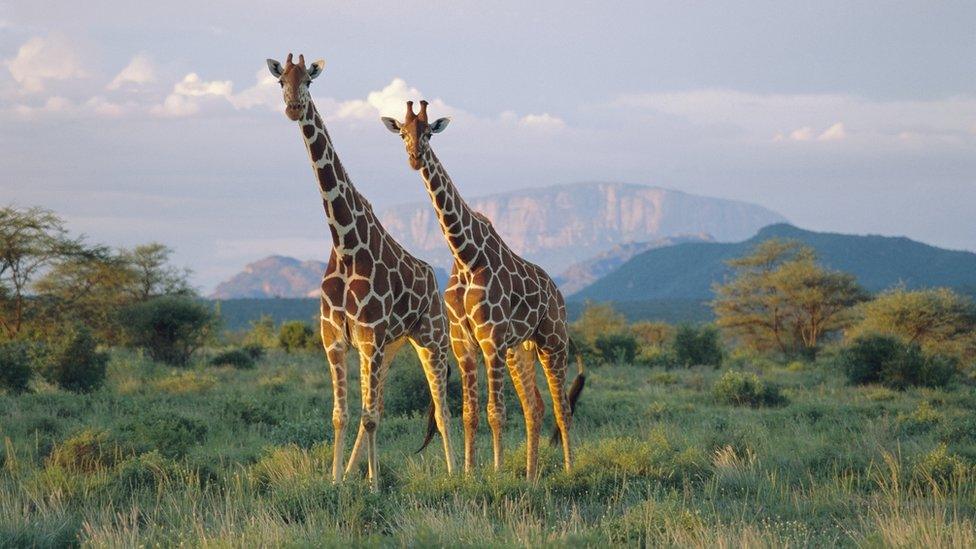Giraffes make friends too, finds new research into mysterious species
- Published
- comments

Giraffes can have stronger connections than first believed
A new study has discovered that giraffes have strong social groups and build friendships with each other.
It is great news as for a long time scientists had thought giraffes had very little social structure around them.
Animals like elephants, monkeys and dolphins are known to have important social systems which impact the way they interact with one another and behave within their communities.
The research, carried out by the University of Bristol, suggests giraffes are a socially complex species and their social organisation may be a lot more advanced than we think.
The study revealed that while giraffes often remain and move around by themselves, many of then also stick together in small groups of three to nine animals
How do scientists work out how well animals get along?
Researchers found that giraffes spend up to 30% of their lives in a 'post-reproductive state' - which is the period after an animal has given birth to all their offspring.
They discovered this is comparable to other species with highly complex social structures including elephants, which spend around 23%, and killer whales, which spend around 35% of their lives in a post-reproductive state.
This matters because it shows animals have plenty to offer their group beyond having children.
For mammals, including humans, this is something known as the grandmother hypothesis, which suggests that females live long past menopause - which is when they can no longer have children - to help raise future generations.
Researchers suggest the presence of post-reproductive adult female giraffes could also function in the same way.
How many species of giraffe are there?
Giraffes stick together in small groups
The study revealed that while giraffes - in particular males - often remain and move around by themselves, many of then also stick together in small groups of three to nine animals. These groups can include related adult female pairs (like sisters or mothers and daughters). Some who these groups have been seen together for up to six years, and also mothers with their children who can stick with one another for at least 15 years.
The groups can be made up of up to three generations of related giraffes, within which adults help take care of other mothers' calves.
"It is baffling to me that such a large, iconic and charismatic African species has been understudied for so long," said Zoe Muller from the University of Bristol's School of Biological Sciences.
"This paper collates all the evidence to suggest that giraffes are actually a highly complex social species, with intricate and high-functioning social systems, potentially comparable to elephants, cetaceans and chimpanzees.
"I hope that this study draws a line in the sand, from which point forwards, giraffes will be regarded as intelligent, group-living mammals which have evolved highly successful and complex societies, which have facilitated their survival in tough, predator-filled ecosystems."
Zoe Muller also highlighted the need for more research on the subject and she believes this will help us understand more about the role that older giraffes play in their societies and the different benefits they bring for group survival.
Still more to learn about giraffes
Muller also feels future studies will help improve knowledge of giraffe's interactions within populations and communities, as well as their conservation needs.
"Conservation measures will be more successful if we have an accurate understanding of the species' behavioural ecology," she added.
"If we view giraffes as a highly socially complex species, this also raises their 'status' towards being a more complex and intelligent mammal that is increasingly worthy of protection."
- Published21 June 2021
- Published10 September 2016
- Published12 May 2021
